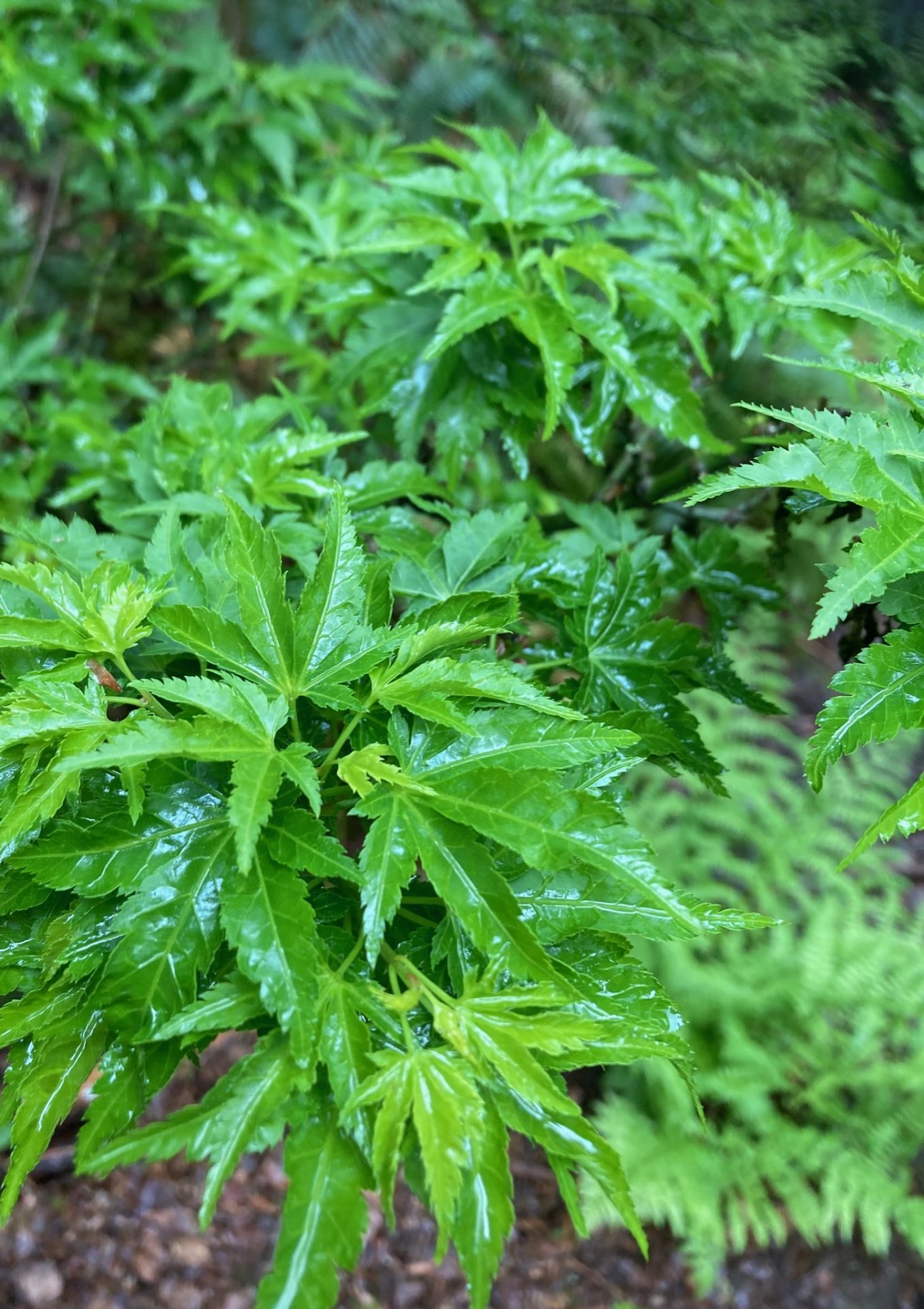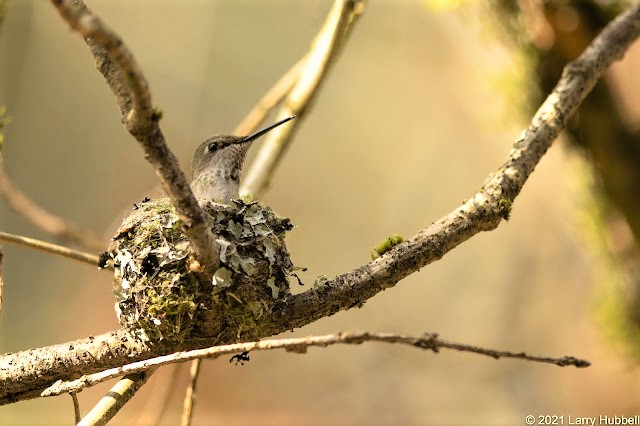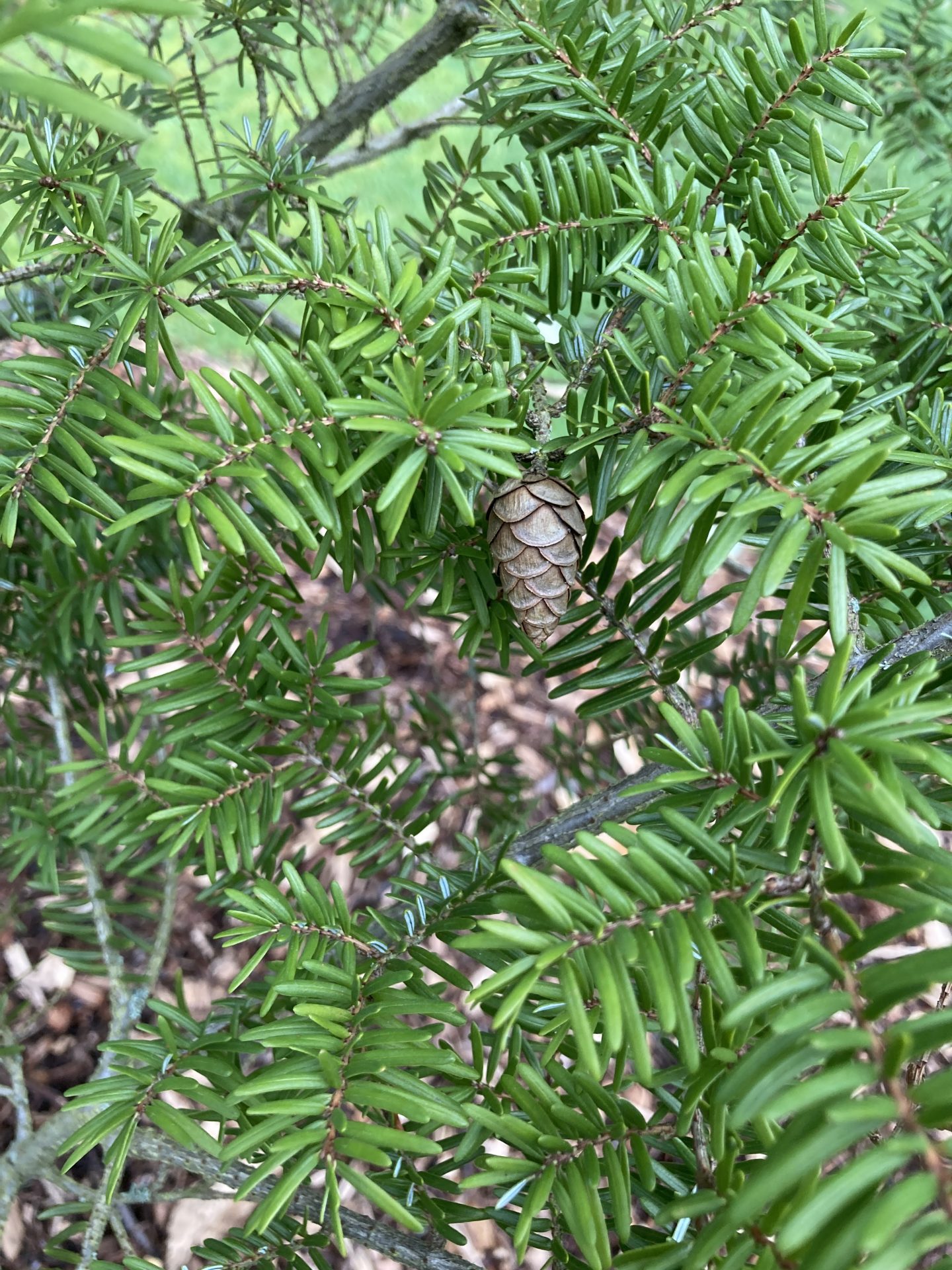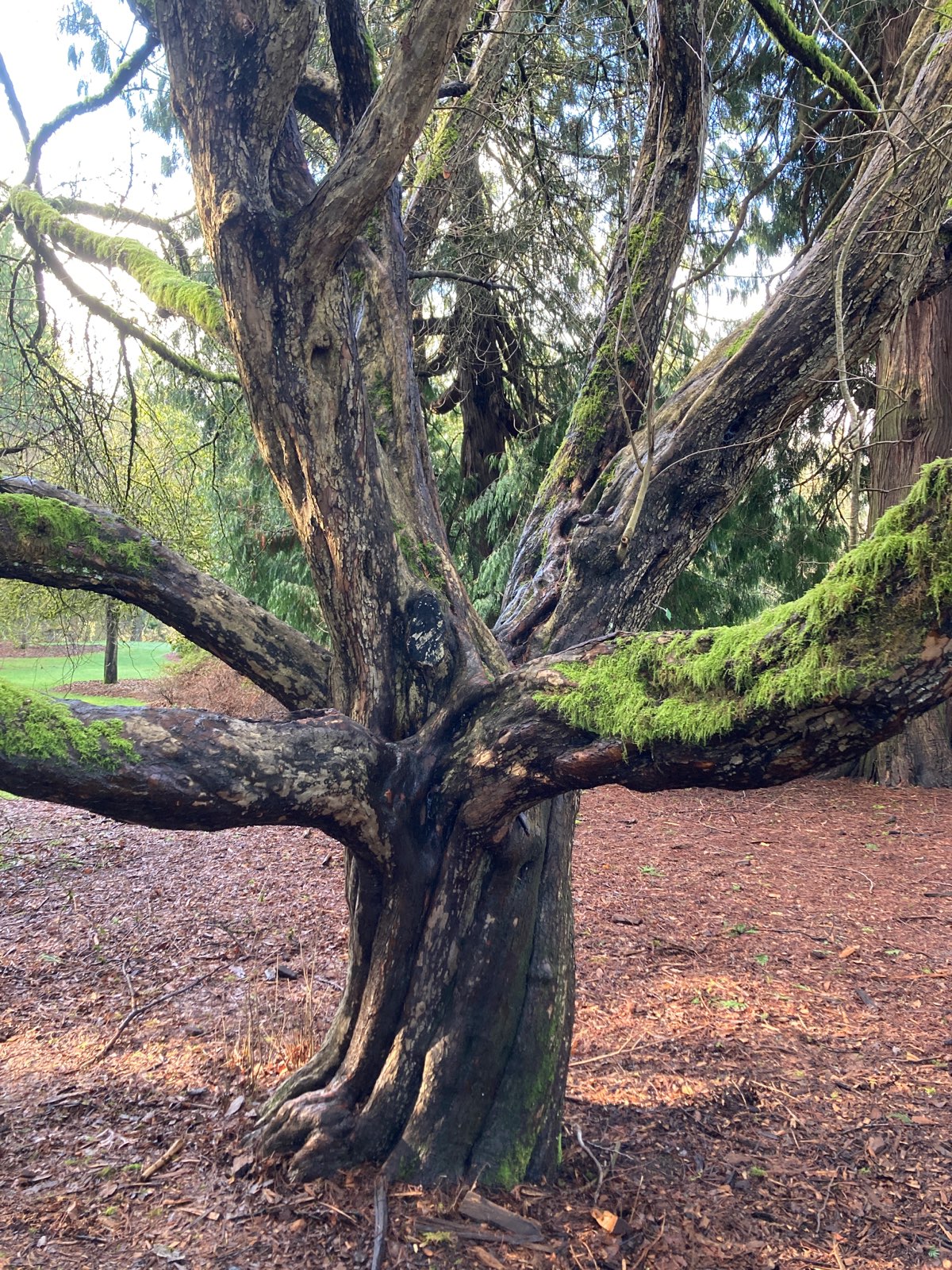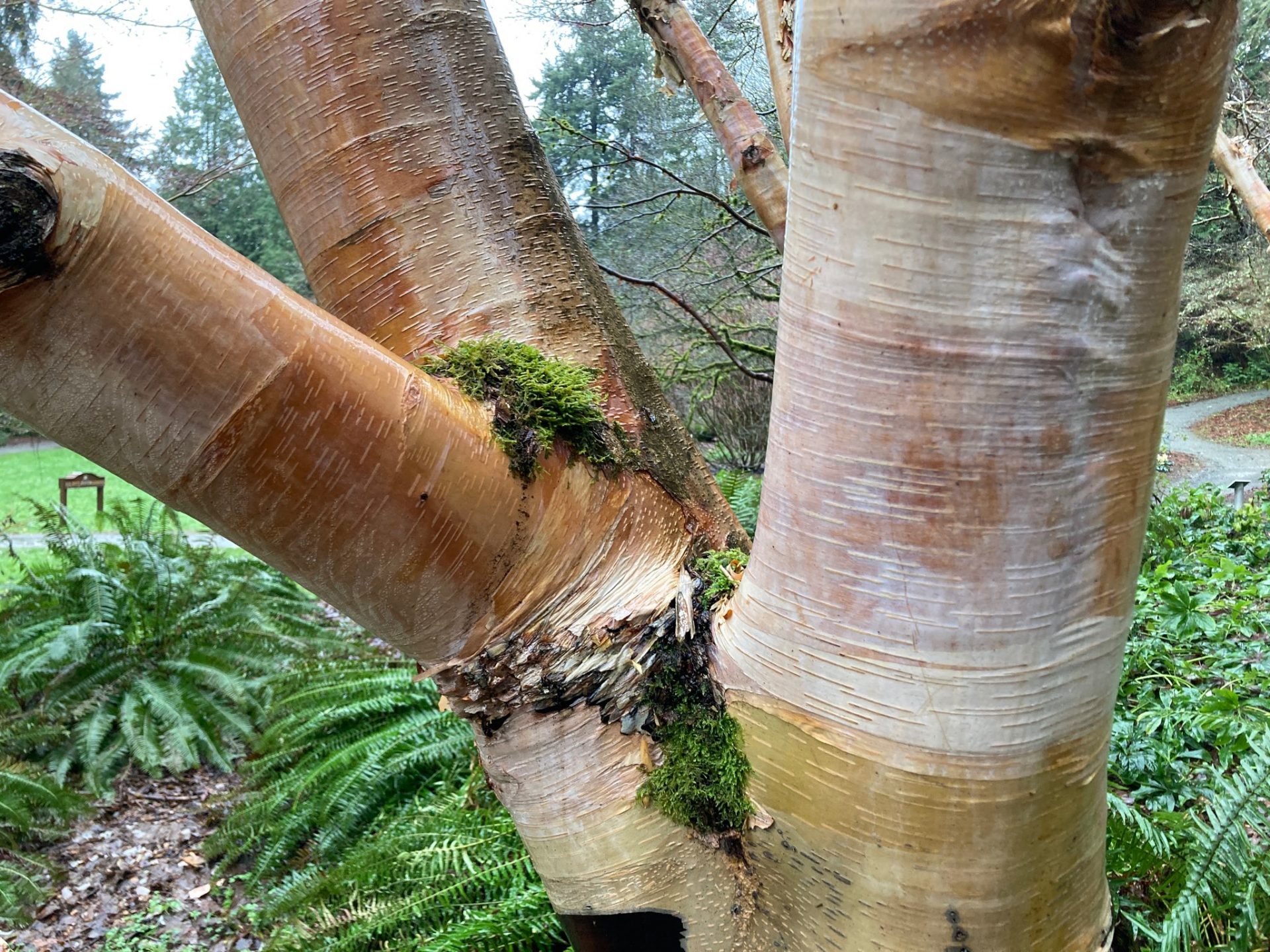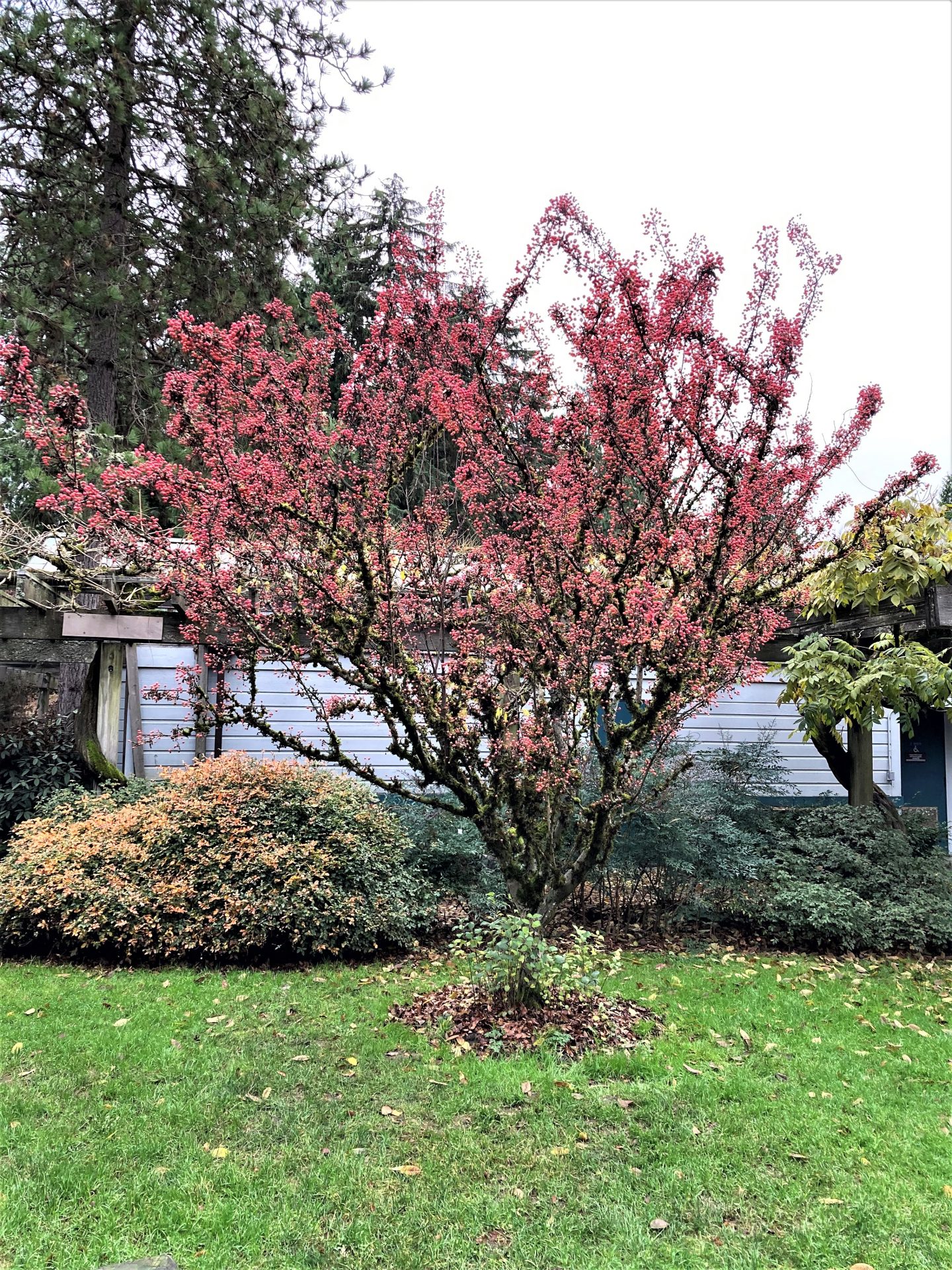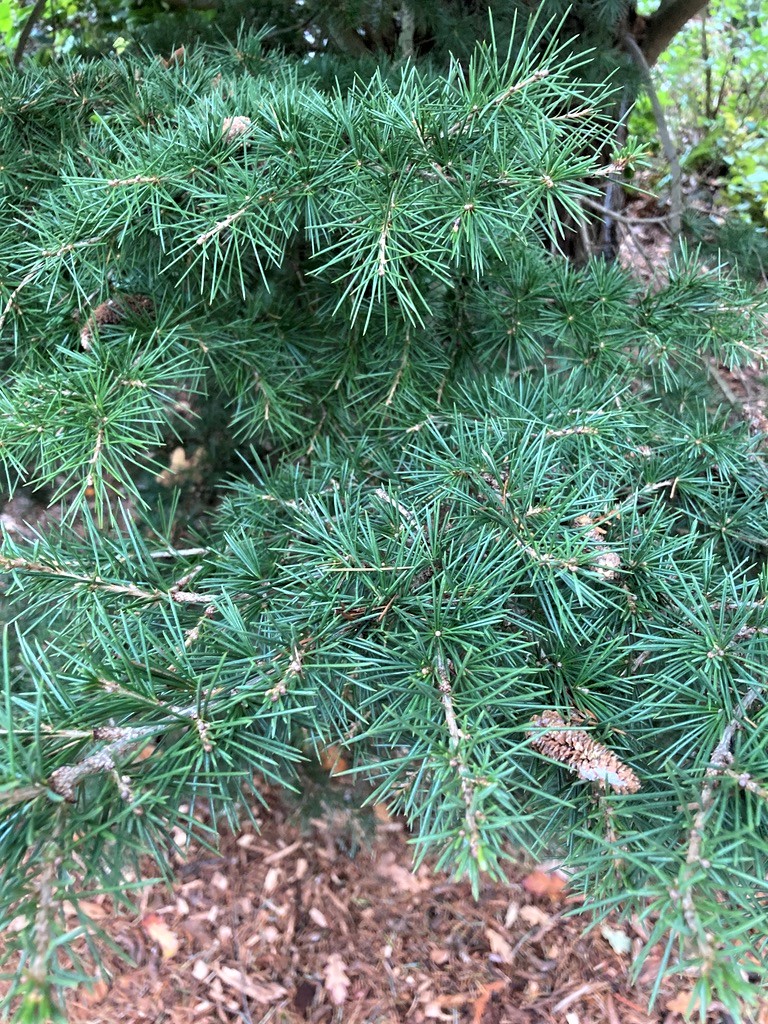1) Bright Green Maples Even the common color of green inspires hope and energy in spring. Here are two exceptional examples: Acer palmatum ‘Shishigashira’, known as the Lion’s Mane maple, was so named for the curled, bunched up leaves at the ends of short, stout stems. Acer japonicum ‘Ed Wood’, located in the Signature Bed at the Graham Visitor Center, sports exceptionally robust foliage for a blast of color in both the spring and autumn.
Read more »I’m Lichen What I’m Seeing!
Let’s dip our toes into the bizarre world of lichens! Lichens are those interesting, colorful, strange little growths found on trees and stones that are commonly mistaken for moss. Lichens and mosses can certainly grow together and often do, but they are far from the same thing. These underappreciated epiphytes are actually not even plants at all. They are a symbiotic combination of fungi and algae which form an estimated 3,600 (and counting) different species of lichen throughout North America.
Read more »Fantastical Fronds and Where to Find Them
Ferns are unique in that they do not flower or produce seeds, but instead reproduce vegetatively or through spores. If you’ve ever seen dark brown dots on the bottom of a fern frond – those are spores! Spores are most often found on the underside of fronds in clusters called sori. 1) Woodwardia fimbriata Giant Chain Fern This species is the largest fern native to North America and is found on the coast in moist coniferous forests from British Columbia to Baja California.
Read more »Living Fossils at the Washington Park Arboretum
The term ‘living fossil’ was coined by Charles Darwin in his book, Origin of Species in 1859. Although definitions can vary, a living fossil generally refers to an organism that has remained in the fossil record for an unusually long time span with seemingly very little change. These organisms are fascinating case studies in plant evolution. Here are some of the living fossil plants that can be found in the Arboretum: 1) Taiwania cryptomerioides Coffin Tree This coniferous tree species is native to eastern Asia and is the only surviving member of its genus, descending from the middle Jurassic Period.
Read more »Hemlocks of the World
Ten species of hemlock (Tsuga) are found across North America and Asia. When young, all species have a tell-tale drooping top or leader. The largest species, Western Hemlock (Tsuga heterophylla), is a common forest tree in the lowland Northwest. A popular landscape tree, Mountain Hemlock (Tsuga mertensiana) is native to higher elevation forests of the Northwest. Check out some of the other hemlocks in the Arboretum collection!
Read more »Bark for Midwinter Interest
1) Betula nigra River Birch Native to the eastern U.S., B. nigra typically inhabits the banks of ponds and waterways, often where the ground is inundated for several weeks at a time. In stark contrast to other white-barked species, trunks of B. nigra are often forked very low and are covered with large flakes of curling, blackish bark. This tree can be found along Arboretum Creek, just east of parking lot #19 (the ‘Birch’ lot).
Read more »Champion Trees of the Washington Park Arboretum
A champion tree is the largest tree of a species. These trees are measured using the American Forests points (AF points) which is calculated based on the trunk circumference, the height, and the average crown spread to give a point value. The Arboretum has many champion trees which were identified by Robert Van Pelt in his 2003 book, “Champion Trees of Washington State”.
Read more »Winners of the 2021 Snow Trials!
1) Betula albosinensis var. septentrionalis Chinese Red Birch These beautiful birches show off the delicate pink, cream, and copper colors of their peeling bark in the Witt Winter Garden. The delicate twigs of the birch shed snow, while the trunk bark glows in comparison to the white. “Septentrionalis” generally means “northern” and refers to the seven oxen which make up the Ursa Major constellation in the northern sky.
Read more »A Berry Colorful Winter Beginning
1) Malus ‘Adirondack’ Adirondack Crabapple A small deciduous, sun-loving tree with multi-seasonal interest. Mass amounts of dark pink buds open to form large fragrant white blossoms in late spring as new foliage emerges. After flowering, it becomes heavily laden with seemingly glowing, pink, cherry-like fruit which last well into winter. Rightfully so, this stunning little tree has received the “Award of Garden Merit” from the Royal Horticultural Society.
Read more »Featured Plants from the Washington Park Arboretum
1) Cedrus libani ‘Nana’ Dwarf Cedar of Lebanon Cedar of Lebanon forests once covered vast areas of the eastern Mediterranean, but 5,000 years of human impacts have left wild populations restricted to mountainous regions of Turkey, Syria, and Lebanon. The resin from the Cedrus libani was used by Egyptians for embalming their dead. This dwarf cultivar usually grows to about 15 feet tall and wide, while the species can reach over 100 feet tall.
Read more »